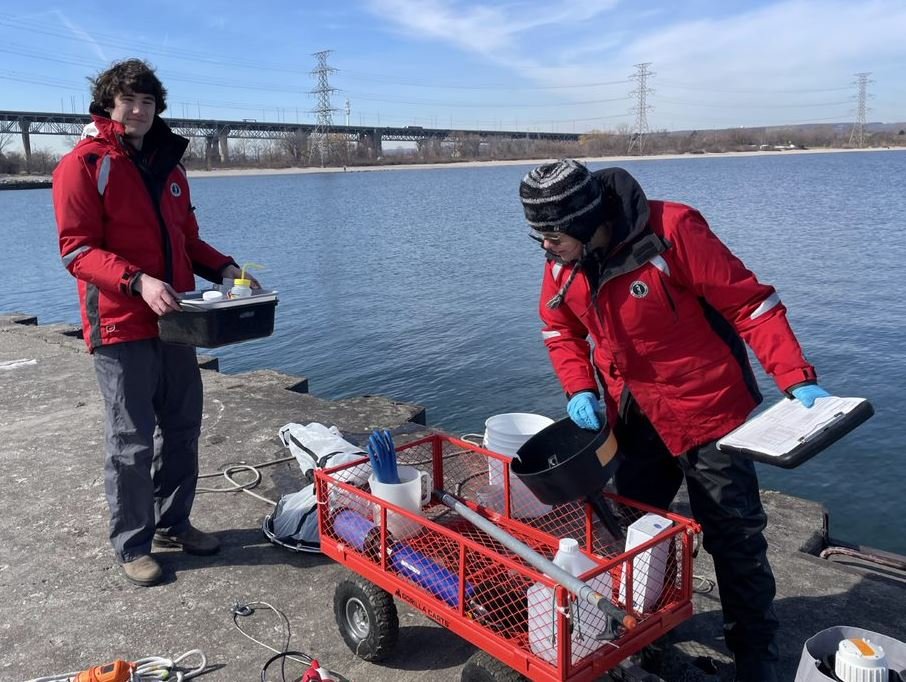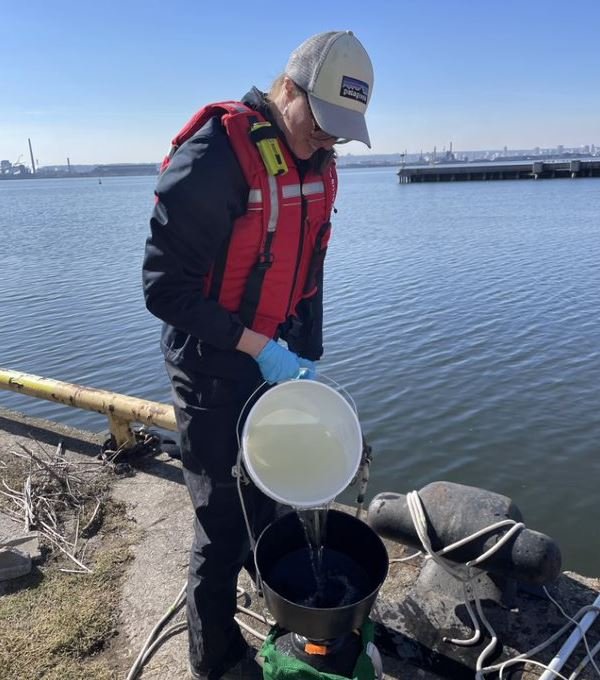“What good is the warmth of summer, without the cold of winter to give it sweetness.” – John Steinbeck
This past week our lab once again sampled sites around Burlington Ontario in February for the WinterGrab II. In the Fall of 2021, a grass-roots group of US and Canadian Great Lakes scientists met to plan a set of standardized sampling for mid-winter across all of the Great Lakes. This initiative was led by Teddy Ozersky from University of Wisconsin Duluth and termed the WinterGrab, in a nod to the HABsGrab done in Lake Erie in 2019. Though there is a common misconception that winter in lakes under ice is quiet, with low growth rates and little biological activity. This couldn’t be further from the truth, since winter has algae blooming and plenty of living things thriving. The intent was to capture a snapshot of winter limnological conditions around February 14, the historical ice peak. Many of the sites were under ice, so required cutting a hole or using an auger for sampling. A sonde profile was collected to measure things like temperature, chlorophyll and oxygen, zooplankton were sampled using nets, ice and snow conditions were documented, and water was collected for water chemistry, phytoplankton and microbial communities, and measures of algal and bacterial productivity. All in all, 49 sites were sampled, by 33 scientists, from 19 research groups, across all of the Great Lakes and garnered media interest from both sides of the border. The data paper for this initiative is in review and should hopefully be available very soon.
The main rationale for this project was the growing recognition that the lack of sampling of large lakes during the winter was a serious data gap. It wasn’t clear if there were consistent patterns across the Great Lakes, and because of Climate Change, it isn’t known if the chemical and biological processes we measured decades ago are even relevant anymore. Our lab had seen this change because, due to our access to the science research ship CCGS Limnos, we sample the “shoulder seasons” early spring and very late into the season (December), mostly in Lake Ontario. These last cruises of the year often had the highest algal biomass values of the year and very dense zooplankton as well. Things were not “slowing down” for winter in our experience.
We did try to revisit the WinterGrab for 2023, but with the very low ice-cover in 2023, and work still underway to process the samples collected in 2022, create the database and write up the results, it never really happened. The winter of 2024 was very similar to last year, with almost non-existent ice-cover but it was decided to still try again, focused mostly on shore-based sampling. These types of projects require specific labs (for consistency) to take in a large number of samples in a short period of time, so some funding is necessary to facilitate this. Much of the credit for WinterGrab II has to go to Trista Vick-Majors from Michigan Technological University for securing funding and distributing standardized sampling kits for this round of sampling. We managed to revisit many of the locations sampled in 2022 and intend to revisit the sites during the summer to compare them to.


It was an incredibly nice (and unseasonable) Monday this past week for Kelly, Heather and our Guelph Co-op student Owen to do our local sampling for WinterGrab II. The sites we sampled were from the wharf at the back of the Canada Centre for Inland Waters, which is protected within Hamilton Harbour, and another site about 800 m away down the canal from the Burlington Canal Pier into coastal Lake Ontario. In spite of their geographical proximity, the sites couldn’t be more different. The temperatures weren’t much different, but the Hamilton Harbour site was dense green with a chlorophyll-a value from the sonde of 15 µg/l. The zooplankton sample was absolutely teeming with copepod zooplankton. The lake site on the other hand was quite clear, with much less algae and very few zooplankton. The samples were shipped for analysis with our partner labs, and now we wait!



Fundamentally this simply highlights the importance of these types of collaborative projects. There is no possibility for a single group to be able to sample across all of the Great Lakes, and even sites that are close together can show remarkable differences in results. During the winter, the Great Lakes are not quiet and sleeping, but are full of life. We still don’t know what reduced ice-cover under climate change will do for biological processes so continuing these sorts of programs are vitally important. Thanks go out to all of the many collaborators on this project. Stay tuned for some amazing results which will hopefully be documented soon.



